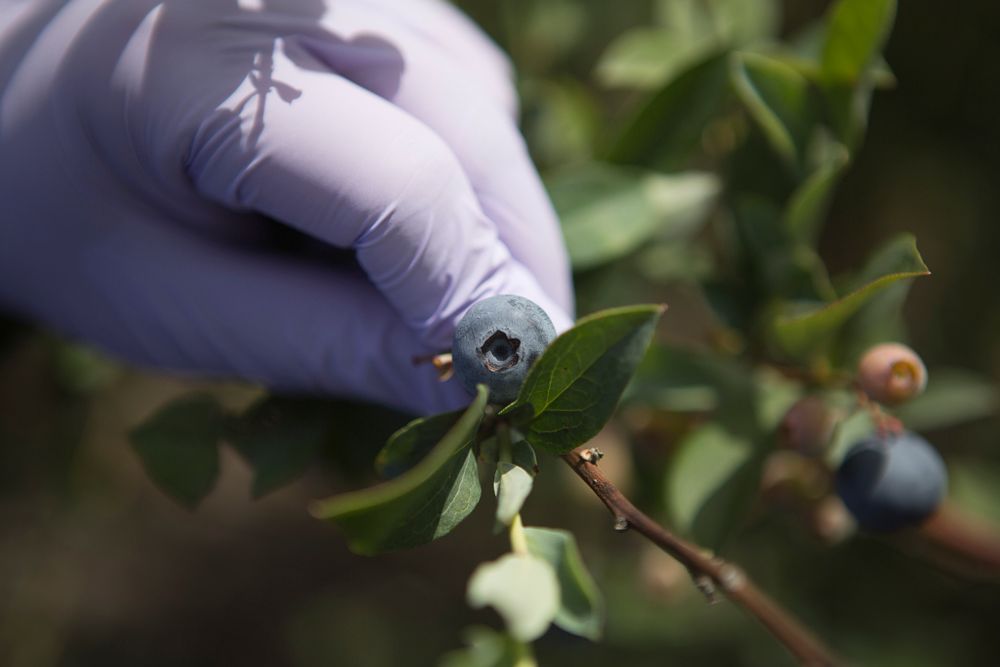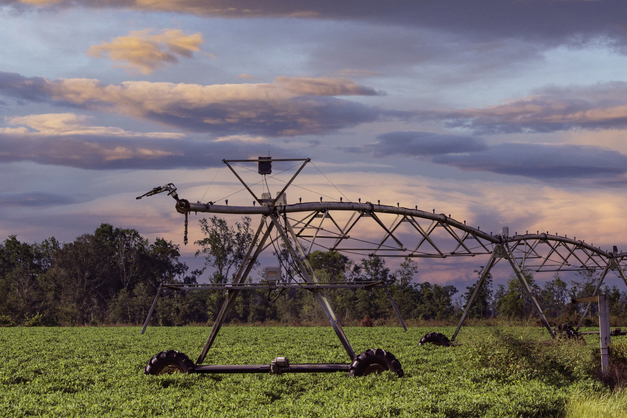Georgia is known worldwide for producing poultry, peaches and peanuts, along with many other crops. Some south Georgia blueberry farmers hope to add olives to that agricultural reputation.
Over the past years, Georgia’s blueberry industry has grown, jumping from 41 million pounds in 2008 to an expected 50 million pounds to be harvested this year. Business has been good. But two years ago, a group of blueberry farmers wanted to diversify by adding another crop to their mix. And olives were on their minds.
“We saw the acreage of blueberries moving in a direction to have a surplus, so we started looking for a second crop,” said Shawn Davis, a Pierce County blueberry farmer who founded the Georgia Olive Association last year. The association now has 25 members.
The group approached James Jacobs, the University of Georgia Cooperative Extension agent in Pierce County. “We saw some changes in the blueberry industry and started to look at other crops. We started looking at olives,” Jacobs said.
Why olives?
The United States imports 99 percent of its olive oil from other countries, 76 million gallons in 2008. Each year, consumption grows.
“The trend to use (olive oil) is growing rapidly,” said Davis, who is growing 18 acres of olives. “Blueberry consumption grew because of its appeal to the health market, olive oil is the same.”
Davis also pointed out that the farm machinery used to work blueberries can be used to grow olives. Olives are also planted similarly to blueberries. Blueberries are harvested in spring and summer. Olives ripen in the fall. California and Texas have olive markets and Georgia’s climate is not much different.
“We already have 90 percent of the infrastructure in place, we just had to buy the trees,” Davis said. “We can take the equipment we already have and use it year round. So many other farmers need special pickers for everything, and they have tons of infrastructures in place.”
In 2008, olive trees were planted in Pierce, Lanier, Clinch, Bacon and Appling counties. Now, there are 200 total acres planted.
But these aren’t the first olives commercially grown in Georgia. In the 1800s, Georgia had an active olive-growing industry. Production was mostly along the coast.
“The fact that they were produced on Georgia’s coast was somewhat of an incentive to investigate this crop,” Jacobs said. “I received several phone calls from individuals across the state and many referred to the past production of olives in Georgia.”
Growing challenges
Olives grow well in soils with a high pH, or alkaline. South Georgia soils are not typically alkaline.
“It is a learning process for us, we are still discovering disease and insect risks and looking at its fruiting ability,” Jacobs said. “We need to take it slow and learn about this crop.”
The region has enough olive acres now to see how well they’ll do in the long term, he said.
“The plants look really good,” Jacobs said. “The extreme cold weather has injured a few, but we should start to see some fruit this year.”
He hopes to start collecting good scientific data next year.
“Olive trees are probably like most trees, and they don’t like wet feet,” Jacobs said. “Site selection will be critical, and it could be a high-maintenance crop.”
Olive trees need time to grow before they produce a crop. The trees planted in 2008 should produce fruit next year. But a full crop isn’t expected until 2013.
One acre of olive trees can produce six tons of olives, yielding 240 gallons of oil. Farmers like Davis can expect to get about $22 for a gallon of oil on the market.
“We should have some fruit this year, based on the size of the plants,” Davis said. “Next year, I am counting on some fruit.”









